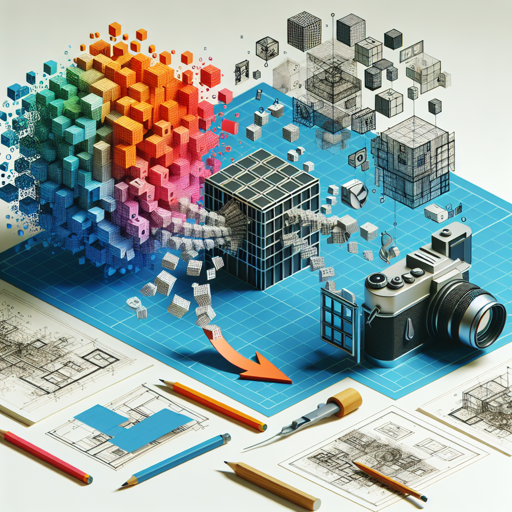Welcome to the fascinating world of 3D generative modeling! In this guide, we’ll explore how to utilize the VFusion3D model, a remarkable tool for generating 3D representations from video diffusion models. This new approach combines a small amount of 3D data with a wealth of synthetic multi-view data, propelling us into the exciting realm of scalable 3D generative models.
What is VFusion3D?
Before diving into the practical aspects, let’s unravel the essence of VFusion3D. Imagine you’re an architect, using blueprints and sketches to build a complex structure. Similarly, VFusion3D uses video and limited 3D data to create detailed 3D models, making it a game-changer in the area of generative modeling.
Getting Started with VFusion3D
The process of getting started with VFusion3D is straightforward. Here’s a step-by-step walkthrough:
Step 1: Install the Necessary Dependencies
To harness the full potential of VFusion3D, you may want to install some additional packages. Run the following command:
!pip --quiet install imageio[ffmpeg] PyMCubes trimesh rembg[gpu,cli] kiuiThis will set you up with everything you need for mesh generation and video rendering!
Step 2: Load the Model
Next, we need to load the VFusion3D model and processor using the following Python code:
import torch
from transformers import AutoModel, AutoProcessor
# load the model and processor
model = AutoModel.from_pretrained("jadechoghari/vfusion3d", trust_remote_code=True)
processor = AutoProcessor.from_pretrained("jadechoghari/vfusion3d")
# download and preprocess the image
import requests
from PIL import Image
from io import BytesIO
image_url = 'https://sm.ign.com/ign_nordic/cover/a/avatar-gen/avatar-generations_prsz.jpg'
response = requests.get(image_url)
image = Image.open(BytesIO(response.content))
# preprocess the image and get the source camera image
source_camera = processor(image)
# generate planes (default output)
output_planes = model(image, source_camera)
print("Planes shape:", output_planes.shape)
# generate a 3D mesh
output_planes, mesh_path = model(image, source_camera, export_mesh=True)
print("Planes shape:", output_planes.shape)
print("Mesh saved at:", mesh_path)
# Generate a video
output_planes, video_path = model(image, source_camera, export_video=True)
print("Planes shape:", output_planes.shape)
print("Video saved at:", video_path)In this code, we start by importing the necessary libraries and loading the 3D model. You then download and preprocess an image that will serve as the input for generating the 3D output. By default, it generates planes, but you can easily export a 3D mesh or video with the corresponding flags.
The Analogy of Building Blocks
Think of the process as building with LEGO blocks. The input image is the base plate, the model represents a box of assorted LEGO pieces, and as you process the image, you start assembling these pieces to form a complete 3D structure. Just like LEGO, adjust various parameters to either create a large tower (high-resolution mesh) or a dynamic cityscape (video). The possibilities are endless!
Results and Comparisons
Once you’re done with the above steps, you can explore the results in the form of generated 3D structures or videos. Here are snippets showcasing some amazing output results:



Troubleshooting Tips
If you encounter issues with the installation or model execution, here are some troubleshooting steps:
- Ensure that your Python environment is properly configured with all necessary packages.
- Check internet connectivity while downloading resources.
- If you face memory issues, consider reducing the image resolutions or generating smaller models.
- Refer back to the VFusion3D [project page](https://junlinhan.github.io/projects/vfusion3d.html) for more documentation on specific errors.
For more insights, updates, or to collaborate on AI development projects, stay connected with fxis.ai.
Conclusion
At fxis.ai, we believe that such advancements are crucial for the future of AI, as they enable more comprehensive and effective solutions. Our team is continually exploring new methodologies to push the envelope in artificial intelligence, ensuring that our clients benefit from the latest technological innovations.

